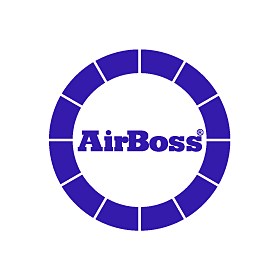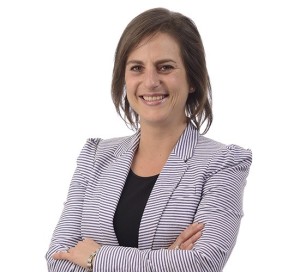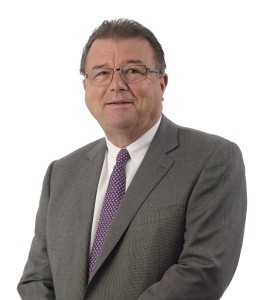AirBoss of America Corp
(TSX:BOS)
(OTC:ABSSF)
Chairman and CEO: P. Grenville “Gren” Schoch
President: Lisa Swartzman
INTERVIEW TRANSCRIPTS:
WSA: Good day from Wall Street. This is Juan Costello, Senior Analyst at the Wall Street Analyzer. Joining us today are Gren Schoch, the CEO and Chairman of AirBoss of America Corporation, along with the company’s President, Lisa Swartzman. The company trades on the Toronto Stock Exchange, ticker symbol BOS, and over-the-counter, ABSSF. Thanks for joining us today there.
Gren Schoch: Thanks for having us.
Lisa Swartzman: Thank you.
WSA: Great. Now starting off, please give us a history and overview there of the company for some of our listeners that are new to the story.
Gren Schoch: The company was incorporated in 1989 as a specialty rubber manufacturer. We started off making specialty rubber products for the transportation industry, off-road tire applications and railroad applications with a small manufacturing site in Michigan. In 1996, we acquired a former Michelin tire plant in Kitchener, Ontario that was and still is the largest independent rubber-compounding site in North America. When we acquired it, that company was doing about 15 million pounds a year and that division is now capable of doing about 400 million pounds annually. In 1999, we acquired a company called Acton in Quebec, which was a specialty rubber products manufacturer making commercial footwear for firemen and the military as well as the specialty rubber compounds for tracks for snowmobiles and agricultural equipment. We green fielded an expansion for rubber compounding in North Carolina in the early 2000s, and as of last week, we made our second acquisition in 2 years – a complementary business for our defense products business called IRT (Immediate Response Technologies).
The company has grown from virtually zero to the current size almost exclusively with internally generated cash and retained earnings and we’ve issued very little equity. I think in total we issued about $12 million worth of equity since day one. We are now the second-largest rubber compounder in North America. We make anti-vibration and noise reduction parts for the automotive industry through Flexible Products, which was an acquisition we did in late 2013. And we are the world leader in chem-bio protective wear for the defense industry. We’re the sole supplier of chem-bio protective boots and gloves to the US military and also sell those products, along with gas masks to the Canadian military and NATO friendly nations.
WSA: So can you guys bring us up to speed on Immediate Response Technologies and what the acquisition adds to your portfolio?
Lisa Swartzman: Well first and foremost it helps us expand our defense product offering. So as Gren said, our existing products are primarily gas masks, boots, and gloves. And this helps us expand into things such as filters, both canister filters and PAPRs which are powered air blowers that are used in conjunction with the canister filters to blow clean air in and provide a positive pressure mask. So what that enables us to do is really take our mask, we believe our newly developed Low Burden Mask is the best performing mask in the world –and enables us to expand the various groups and communities that it would be attractive to. So we’ll be able to take that what has been a strictly military grade performing mask into other industries or other groups, primarily first responders, National Guard, fire departments,. They also provide decontamination tents and shelter systems. Those are used both in terms of treating people exposed to chem-bio hazards as well as communicable diseases – so, as triage centers as well as for treatment.
If you were following when the Ebola crisis was going on, many of the people that were being infected were medical first responders. If you saw footage on the news, you may have seen people being transported back to the US for treatment in individual protection units. Those are called ISO-PODs and that’s another product that IRT makes and they’re seeing an increased demand for that product. So it helps us expand the product offering and diversify our revenue and cash flow basis. And we believe that there are very strong synergies in being able to cross-sell our products.
IRT sells primarily to US based organizations. So this will enable us to take their products and utilizing our existing global distribution network sell them into the international markets where we are gaining a strong foothold with our products. And conversely, it enables us to use their network and their contacts to be able to sell our products into areas like the first responders where they’ve greater penetration than we do.
The structure of the transaction is an initial all cash transaction of about US $37 million subject to working capital adjustments and then there is a 60-month earn-out potential subject to certain performance objectives, where they are able to earn an additional US $25 million.
WSA: And to round out some of your recent contracts, perhaps you could talk about your contract for the CBRN protective gloves.
Lisa Swartzman: That’s a contract that we were awarded about a month and a half ago by the US Department of Defense. It’s a maximum five-year contract for a maximum total of US$11 million. The first order of that has a US$5.2 million value and we’ll begin shipping that in the third quarter of this year and will complete it by Q2 in 2016. And that is a follow-on to the over boot order that we received from the DoD for US$15 million, which we received last August. Typically those two products go together.
WSA: Right. And so what were some of the key drivers behind the Q1 results?
Lisa Swartzman: The Q1 results were driven largely by our rubber compounding division and our automotive division. In rubber compounding– about three years ago or four years ago, if you look into the history of the business, we were quite exposed to one particular customer, so we’ve spent the past few years both diversifying our customer base, so that we are less reliant on one single customer, and also expanding and moving up the curve, if you will, into higher-end compounds. And really what we are seeing is the fruits of those efforts and the corresponding increase in our margin dollars. And we measure that business on margin dollars – we caution people not to focus too much at the top line revenue number which is impacted heavily by the commodity price of rubber, which we pass through to our customers. So we evaluate that business really on gross margins dollars and EBITDA dollars. And we are seeing the fruits of the labor of diversifying that customer base as well as spending time on our manufacturing operations and improving our processes. And the combination of that is a having a very positive effect, notwithstanding that our overall capacity utilization has not increased materially.
On the automotive side, we are predominantly supplying to three large North American OEMs as well as tier one suppliers to them and other OEMs. So there is an obvious benefit that we are seeing from the higher production volumes in the US. But really that’s a market that is less sensitive to where the production volumes are, the market dynamics are increasing the need for the parts that we provide.
WSA: And what are some of the key trends that you guys are focused on right now in this sector and how is the company positioned to capitalize?
Lisa Swartzman: Well, in the automotive sector there is a strong movement towards light-weighting cars and increased fuel efficiency. And so the way we are trying to approach that is by continuing the new product developments that we’ve been doing. In the past couple of years, our automotive division, Flexible Products has been introducing north of 40 new products each year and that’s virtually double from where they were about five years ago. The other trend that’s going on in that industry is that many of the OEMs are looking to consolidate their supply base and to have suppliers that can supply them on a global basis into all of their various manufacturing sites. So we are evaluating a variety of different alternatives of how we address that. We are currently located in Michigan, about an hour away from all of the R&D and tech centers of the OEMs and we are evaluating how we expand off of that.
In the rubber compounding sector, there has been a consolidation of capacity. The industry was over-capacitized and now that that’s coming down, we are seeing a return to more rational pricing. There are fewer players remaining in the market. We are also seeing a return from some of the rubber manufacturers that had started to move offshore and felt that they could satisfy all of their manufacturing needs in Asia. Basically, with the increased demand, particularly in the automotive sector, many of those manufacturers are moving back to the US and bringing their production back here. And the demand in Asia is exceeding what their supply is capable of doing. So we are seeing a pickup in the demand over here. And we are very focused on increasing our capacity utilization. I mentioned that in our Q1 results, there was a very strong performance by our rubber compounding division and that’s without increasing, on a material basis, our capacity utilization, so increasing that could provide very strong bottom line growth to the business.
And the defense business, has been very much affected by global politics. But we feel that that market – especially with the increase in both chem-bio threats and communicable diseases, the MERS outbreak in Korea and China, SARS, Ebola – we think that our existing business, and particularly now coupled with the IRT acquisition, that we are positioned very well to address those concerns.
WSA: Great. And what are some of the key factors that you guys feel make AirBoss unique from some of the other players in the sector?
Gren Schoch: Well, I am not aware of any other public company which actually has all of the aspects to it that we do. We have competition in each of our various divisions, but I am not aware of any competitor that does everything that we do. All of our businesses are in relatively high barrier to entry markets, and we are a leader in all of those areas. And probably we are relatively unique in that we’ve managed to grow from a 10 million-market cap to a 500 million-market cap, virtually without issuing equity. The company has been profitable for most of its history, and we’ve been growing dividends consistently for the last eight years. So I think all of those things make us really unique.
WSA: Certainly. And perhaps you guys can walk us through your background experience and talk about the management team.
Gren Schoch: My background is I am a graduate engineer. I was the founder of the company and I have been with it since 1989. All of the people that run our divisions have been with us or with those divisions for a long time, some in excess of 30 years and they are all very capable individuals. And I will let Lisa give you a bit of her background. Lisa, as you know, took over as President on January 1st of this year.
Lisa Swartzman: I joined the business a little over a year ago and the bulk of my experience is actually not in the rubber industry, but was with large publically traded companies in the food manufacturing, distribution and retail grocery sectors I then spent five years in various advisory roles working with private equity firms and their portfolio companies, as well as mid-market privately held companies. So my experience runs the gamut from large public companies coupled with the experience of small- to mid-market companies.
WSA: And what are some of the key goals and milestones that you guys are hoping to accomplish over the course of the next year?
Gren Schoch: Well, if we go back two years ago at the annual meeting, I suggested to shareholders that we had a goal to double earnings in three years. We accomplished that in one year. At the annual general meeting in May of this year, I reiterated a new goal to double in the next three years from then and we are well on our way to doing that. Rubber compounding, which is still our largest division, is currently at less than 70% capacity utilization. So our short-term goal there is to significantly increase the capacity utilization. The auto parts part of our business – the business has grown significantly over the last five years, but there is a lot of growth left. We currently supply less than half of the automakers, so just supplying our existing products to new customers that we currently don’t supply should provide a platform for significant growth. And the next phase of growth beyond that would be to establish a global footprint and service the customers in Asia and Mexico and Europe from all locations.
In the defense side of the business, the short-term goals are to get our new gas mask – which is being introduced next month – to market and get some significant orders for that and to integrate the recent acquisition of IRT and exploit the synergies that exist between those two businesses.
WSA: Great. And as far as investors and the financial community are concerned, what do you wish investors better understood about the company?
Gren Schoch: I think we are a relatively unknown company, primarily because we have not come to market with new equity issues since 1996. So it’s a relatively close-held secret, I think it’s just a matter of telling our story to a broader group of investors and as the size of the company grows, it will be of interest to the people who wouldn’t have known us in the past.
WSA: Certainly. And once again joining us today are Lisa Swartzman, the President of AirBoss of America Corporation as well as the company CEO and Chairman, Gren Schoch. The company trades on the Toronto Stock Exchange, ticker-symbol BOS, as well as over-the-counter ABSSF, currently trading at 22.05 a share, market capital is north of 500 million. And before we conclude here, to recap some of your key points, why do you believe investors should consider the company as a good investment opportunity today?
Lisa Swartzman: Well, reiterating Gren’s comments, each of our businesses is performing very well and we think there are a number of really good opportunities to improve the performance even more and we are aggressively pursuing them. We think that there is organic growth opportunities available and we of course will continue our prudent review and evaluation of acquisition targets. If you look at some of the metrics of our business, since 2013, we have almost doubled our return on equity and our return on invested capital, we have a very strong balance sheet, we have good access to capital, and we are very prudent managers and stewards and focused on shareholder return of value.
WSA: Well, we certainly look forward to continuing to track the company’s growth and report on your upcoming progress and we would like to thank you guys for taking the time to join us today and update our investor audience on AirBoss. It was great to have you guys on.
Lisa Swartzman: Thank you very much.
Gren Schoch: Thank you.




